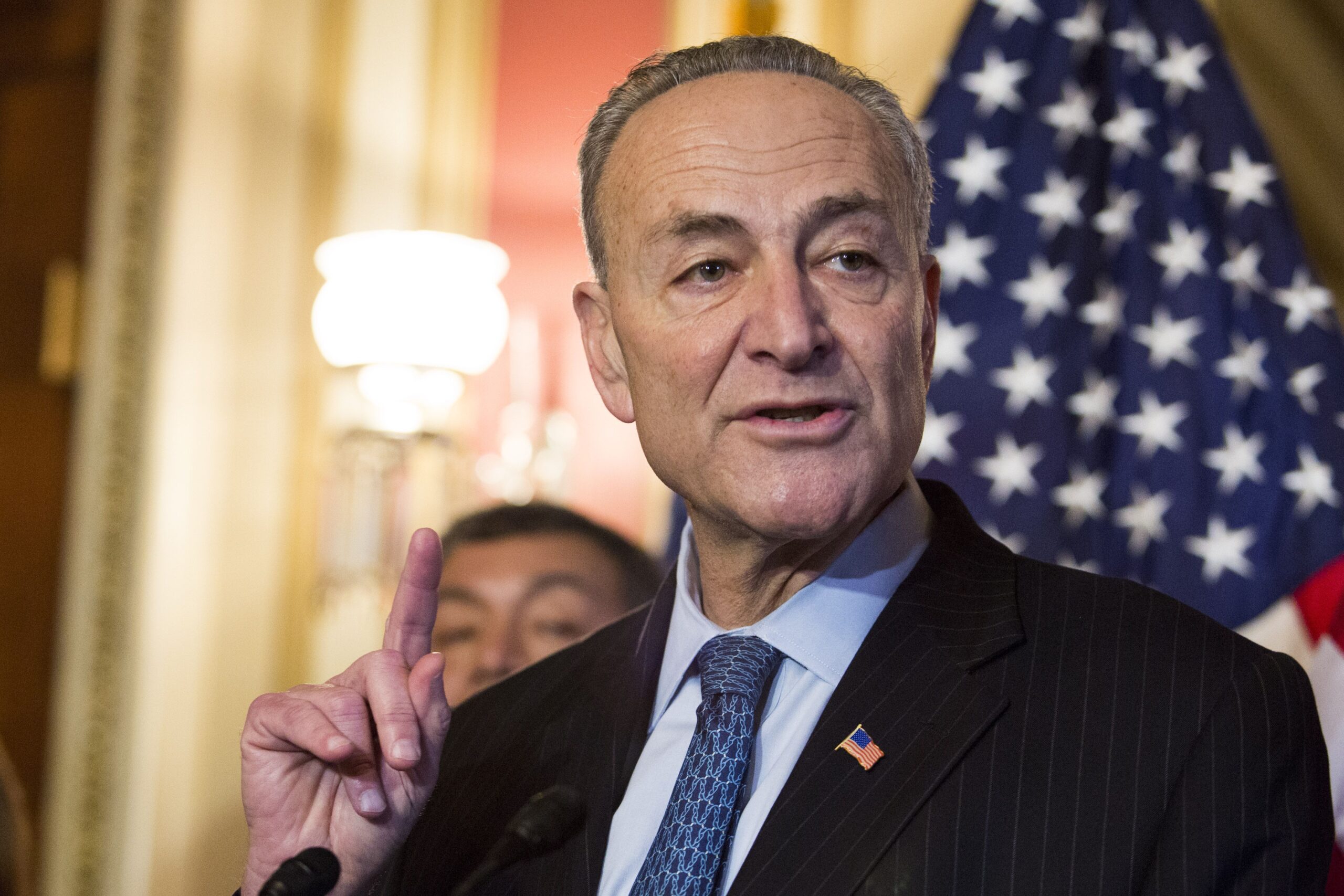Washington, D.C. – In a strategic move highlighted by Senate Majority Leader Chuck Schumer, Democrats are betting heavily on the judiciary to serve as a bulwark against the anticipated policy onslaught from a resurgent MAGA movement under President-elect Donald Trump. With the GOP set to control both the White House and Congress after a tumultuous election, Schumer has revealed what he describes as a “stealth” plan aimed at leveraging the judicial branch’s power to protect and perhaps extend the legislative gains of the Biden administration.
Schumer, speaking in an exclusive interview with Politico Playbook, emphasized the judiciary’s role as “one of our strongest — if not our strongest — barrier against what he [Trump] does.” The strategy involves capitalizing on the significant number of judicial appointments made during Joe Biden’s presidency. Over the last four years, Biden, with Schumer’s assistance, managed to confirm 235 judges to federal courts, surpassing the number confirmed by Trump during his first term.
A Focus on Diversity and Ideology
The appointments have notably shifted the demographic and ideological makeup of the federal judiciary. About two-thirds of Biden’s appointees are women, and a majority are people of color, aiming to make the judiciary more reflective of America’s diversity. This was not just about numbers but also about ensuring the bench was filled with judges who understand and might protect the policies Democrats have championed. Schumer’s strategy echoes a tactic used by George W. Bush’s administration, but with a progressive twist, focusing on civil rights lawyers, public defenders, and labor rights advocates to broaden the professional background of federal judges.
The Judicial Resistance
With Democrats preparing for a significant loss of legislative power, the judiciary becomes a critical battleground. Schumer’s comments suggest that these judicial appointments will be pivotal in resisting what he anticipates will be aggressive policy shifts from the new Trump administration. The focus is particularly on areas like women’s rights, environmental protection, labor rights, and consumer protection, where Trump’s agenda might seek to undo recent Democratic legislative achievements.
Looking Forward – The Judicial Chessboard
Schumer’s revelation comes at a time when nearly three dozen judicial vacancies await Trump’s potential appointees. However, Democrats see a silver lining in the judges who delayed retirement, hoping for a Republican presidency to appoint their successors. Liberal judges who rescinded retirement plans post-Trump’s win might now play a crucial role in maintaining a check on conservative judicial pushes.
Moreover, the strategy involves not just defending Democratic policies but also potentially shaping how future legal battles over these policies are adjudicated, given the lifetime tenure of federal judges.
Political and Public Reaction
The revelation of this judicial strategy has sparked varied reactions. Conservative commentators argue that this approach is an admission of defeat in the legislative arena, pushing Democrats towards a judicial overreach. On the other hand, progressive groups have lauded the foresight, seeing it as a necessary defense mechanism in an era where judicial rulings could dictate the fate of key social and environmental policies.
The public discourse around this strategy is also colored by concerns about judicial activism versus restraint, with debates on whether the judiciary should be used in such a partisan manner.
Schumer’s acknowledgment of this judicial strategy underscores a new reality in American politics where the courts are increasingly seen as arenas for continuing political battles. With the Senate’s power dynamics shifting, Democrats are banking on the judiciary to hold the line against what they see as a rollback of progressive gains. This approach might define how legislative legacies are preserved or dismantled in the coming years, highlighting the judiciary’s role as both a shield and a sword in the political landscape.
Sources:
- Yahoo News: “Chuck Schumer Reveals Stealth Dem Plan to Block MAGA Revolution” data:image/png;base64,iVBORw0KGgoAAAANSUhEUgAAABAAAAAQCAIAAACQkWg2AAAACXBIWXMAAAsTAAALEwEAmpwYAAAAtGVYSWZJSSoACAAAAAYAEgEDAAEAAAABAAAAGgEFAAEAAABWAAAAGwEFAAEAAABeAAAAKAEDAAEAAAACAAAAEwIDAAEAAAABAAAAaYcEAAEAAABmAAAAAAAAAEgAAAABAAAASAAAAAEAAAAGAACQBwAEAAAAMDIxMAGRBwAEAAAAAQIDAACgBwAEAAAAMDEwMAGgAwABAAAA//8AAAKgBAABAAAAEAAAAAOgBAABAAAAEAAAAAAAAADuCXwMAAABXklEQVR4nI2S36oBQRzHZ9eabaPcuVbaNolSyIWbjRfwGOIFvII/uSAXcodHcO9SLrZQPIAbEWHnWLO7s3Oac05YdVrfpr6/vv0+M019AVLVM4S/5yJJV1nGnQ4lxJUHg3oyibtdSik4Q0gfIoSs1yifx72eK7cssligbNYcj1+A04naNqM0TU+lHrmz31NCGDWZfJVKTwAVCvdajU0YX0KhR67H47jZZBctl3omw4MXObsdMwipYbjy45EZxwHHcQH/iRNFZpbF+f2C5zasVIRiEQBAZjNeUbxfgOUyL8vAMMzhkI9GvQEyndLDAUiS1O9bo5E3YFSrZqsFAOBjMWe7/ejTFCFmPh8l5CPgVU+AEwSforDpfucCgdclLhxmZtschO4u/ciez/V0+pnfbn9FW630RMINmCbRNJTLmYPBeyk3G6SquN0Gb/XWFQU3GtRxXLkoXiMRXK9T2/4G6CgePNeg43UAAAAASUVORK5CYII=
- Politico Playbook: “How Schumer is prepping for Trump 2.0” data:image/png;base64,iVBORw0KGgoAAAANSUhEUgAAACAAAAAgCAYAAABzenr0AAAC6klEQVR4nO2XPUgcQRTHf3O79+G3pokSoySBIDaGoFgICbbBFGm0EVRsrhF7K7WysRYsAhY2xi9IiNgoxBwY1BALPUMSLYQEFfEweh/r7UyKu6ynHtlzvUuT/GFZdmfmvd+8nfeWJ0hqBkrzwC+gVUIt4CWLUnCqwWcJk1EYeQEhAAHwFh4IeOmGJxIws+k5KQG4kncD3gvofAbfxBsoA14XQFM0B47TyQuEIQA81zXw6xk6V2neCQcARgKiKQ5+XUFbOsPppOXng7joUkmJNAykaVphtpM6v9p0ATV231wBnspKHs3MoBUWgjpHNmMxYvv7RDY2CK2ucjA5iTIM28iYgIAaMZc+slcAfHV1PF1ZweV2/3Hu3uIimz09RDY2MopGJnMSkhJ5dmY77XZzM4+np/FWV9vv7FoAl3S4sMCXgQF2xsYIBYMXnJU8fMj9vr7cAhzMz7PZ30+ws5MPDQ18bG8ndnBgjd9pbcWXQRQcA7g8HvSkAXl6yo/xcbaHh61xvbSU/Pr63AGk6nf6hba2kCmGC8rL/w4AJFO1pMRKPwUYJye26ag79iilVVAkoBcVUdXVdQ5gmoS3t23NOAbQiovxVlTgLi+nrLGRu93d3Kqvt8aPg0HCa2u2IXYMcK+3lyq/H+HxoOflXRiTUvK1vx8zHM4dgMvnw+XzXXkfj0bZGhxkf2oqowPm/AykSCpF/PiYw0CAnaEhQktLGZ9uxwDfZ2fZm5tDKEV0b4/w+jqx3V2UlNdKLccAP5eX2R0dtQyIlOs6cgwg3G40bl5IslaI/gP8AwBCIDTtwnM2pAMxMumC4nGMw0Or7MpIJBv+Y2IOPmlQZ9sNaRruoiJr52Ykgow6b2U0IA7ruoQJHepsV5gmRihkPd70AwhAwYRLwcgZBK7+VtIvclLtLssLnEFAwYirBY6Ajii8c5MITa6kkTh00URf2NECR9ZmZqC0EPwSWuNQ68pyey4hpsMm8MoDI83J9vwXEdP8YQ5S6FkAAAAASUVORK5CYII=

